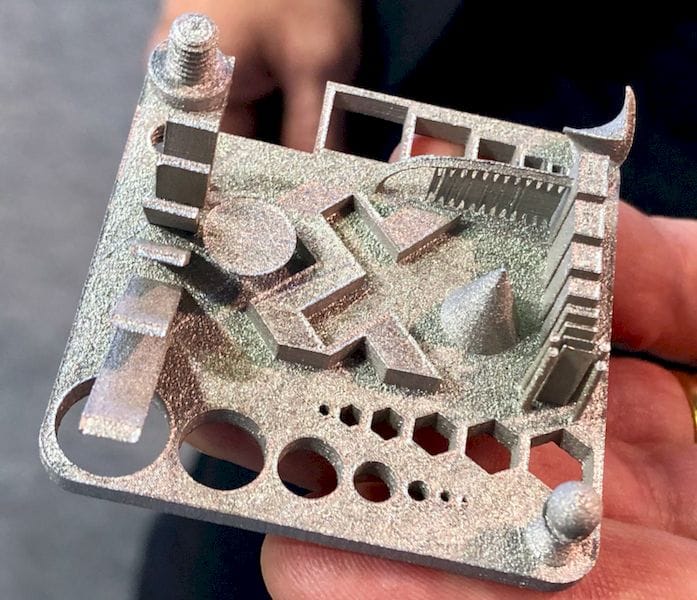![A finely detailed metal 3D print from Xact Metal [Source: Fabbaloo]](https://fabbaloo.com/wp-content/uploads/2020/05/image-asset_img_5eb0a21b5d3fc.jpg)
Metal 3D printing startup Xact Metal has done a slight pivot on their path to success.
The Pennsylvania-based startup launched a couple of years ago with the aim of producing a low-cost metal 3D printer that would be far more accessible. At that time there were relatively few metal 3D printing options aside from the incredibly expensive industrial machines.
The cost of acquiring and especially operating such equipment was (and is) certainly prohibitive for almost all organizations. While the costs of these printers are high, the other costs related to metal 3D printing are equally high.
That’s the world in which Xact Metal was conceived. They designed and built a smaller metal 3D printer that was indeed a lot less expensive to acquire and operate than traditional equipment.
However, things changed.
Since their launch there have been a number of spectacular launches of lower-cost 3D printing technologies, such as Desktop Metal. These alternative technologies often use processes quite different from the traditional powder-bed-laser approach by the big guys – and Xact Metal.
Xact Metal faced a pricing challenge, and they came up with a unique solution, one that involved direct consultations with customers and prospects.
Their idea was to de-rate the laser on their system. This laser is used to fuse the metal powder on the print bed. By de-rating it — or in other words, lowering its power — they would necessarily slow down the printing process: the laser would have to remain on each point a bit longer to heat up the metal powder to its melting point.
Their consultations with clients and prospects revealed that there were indeed many customers who were eager to trade speed for cost savings.
This makes some sense: if a print job is to run overnight, who cares if it takes seven hours instead of five? Overnight is overnight regardless.
It also makes sense due to the design of the Fact Metal system. Xact metal uses a unique direct drive approach where the laser beam is pointed directly down (90 degrees) on the print bed. This ensures an always uniform illumination shape, as opposed to many other systems that employ a galvanometric mirrors to redirect the beam. That approach can distort the shape of the illumination shape on the edges of the build platform. Meanwhile, Xact Metal uses a mechanical system to move the beam around and this is necessarily slower than a fast-acting mirror. Thus the Xact Metal 3D printer will be a bit slower than you might expect.
On the other hand, it’s also less expensive than you might suspect. We were told their changes will result in the price being lowered from a previous US$120K to only US$90K per machine, a cost reduction of 25%.
That’s significant and takes their price below the magical US$100K mark, where the departmental signing authority might rest in many organizations.
The company is now smartly focusing on small to medium-sized manufacturers and institutional laboratories, both of which would appreciate the lower costs.
Xact Metal says shipments of the new machine commence in December.
Via Xact Metal











Aerosint and Aconity have proven out their work in multi-metal powder deposition 3D printing.